GlobalSat WorldCom BT-338 Bluetooth GPS Receiver User Manual
GlobalSat WorldCom Corporation Bluetooth GPS Receiver
Users Manual
1
User Manual
Bluetooth GPS Receiver
BT-338
ver 1.04
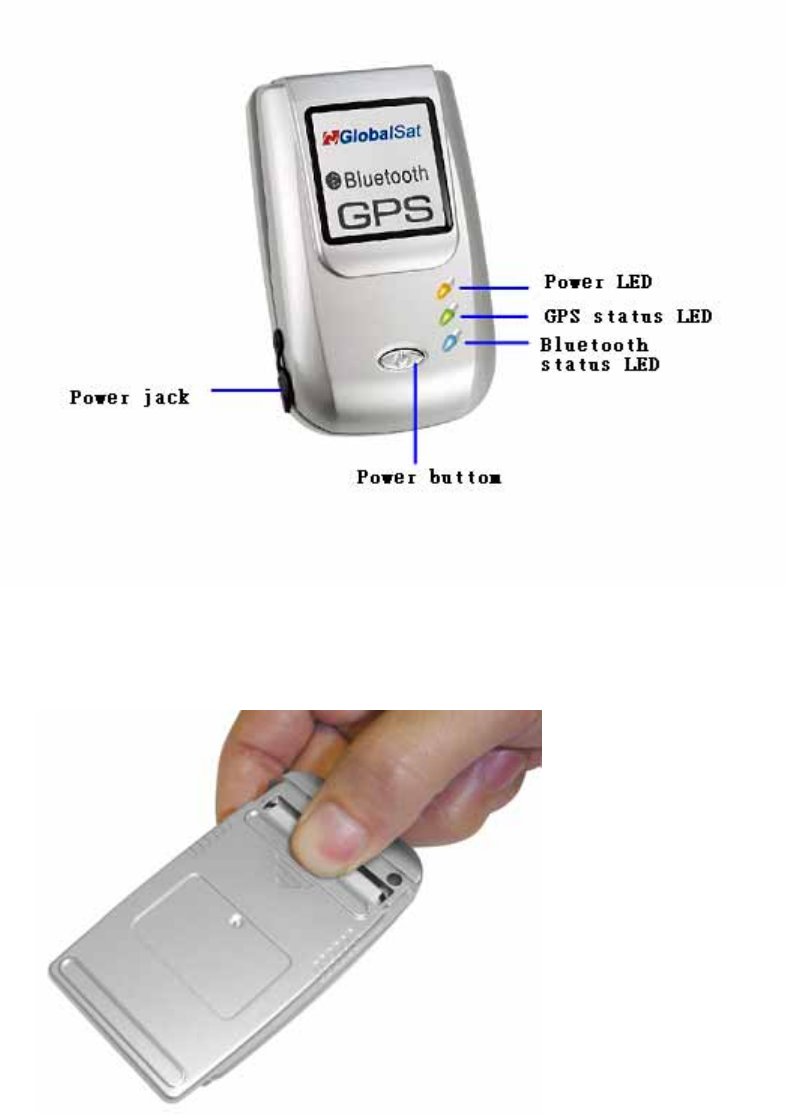
2
1 BT-338 at a glance
1.1 Appearance and Function
1.2 How to change battery
Figure 1 Open the cover of battery
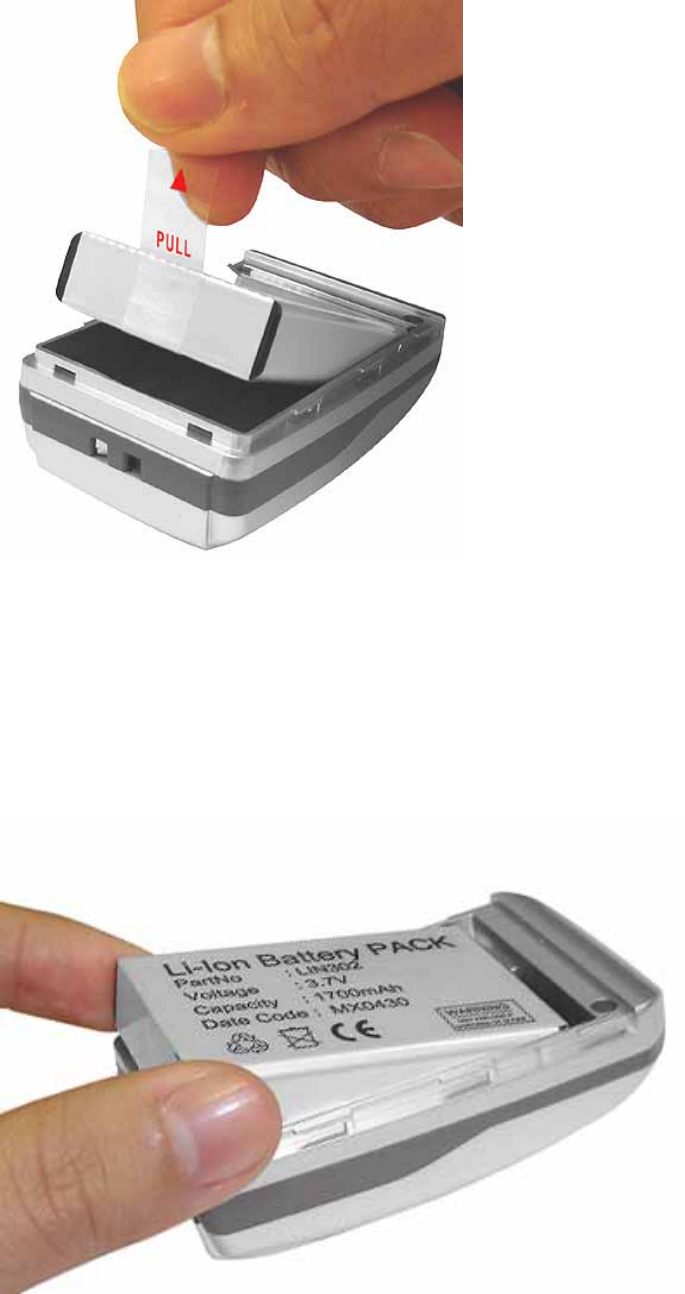
3
Figure 2 Take out the battery with pull tag
Figure 3 Put new battery into BT-338
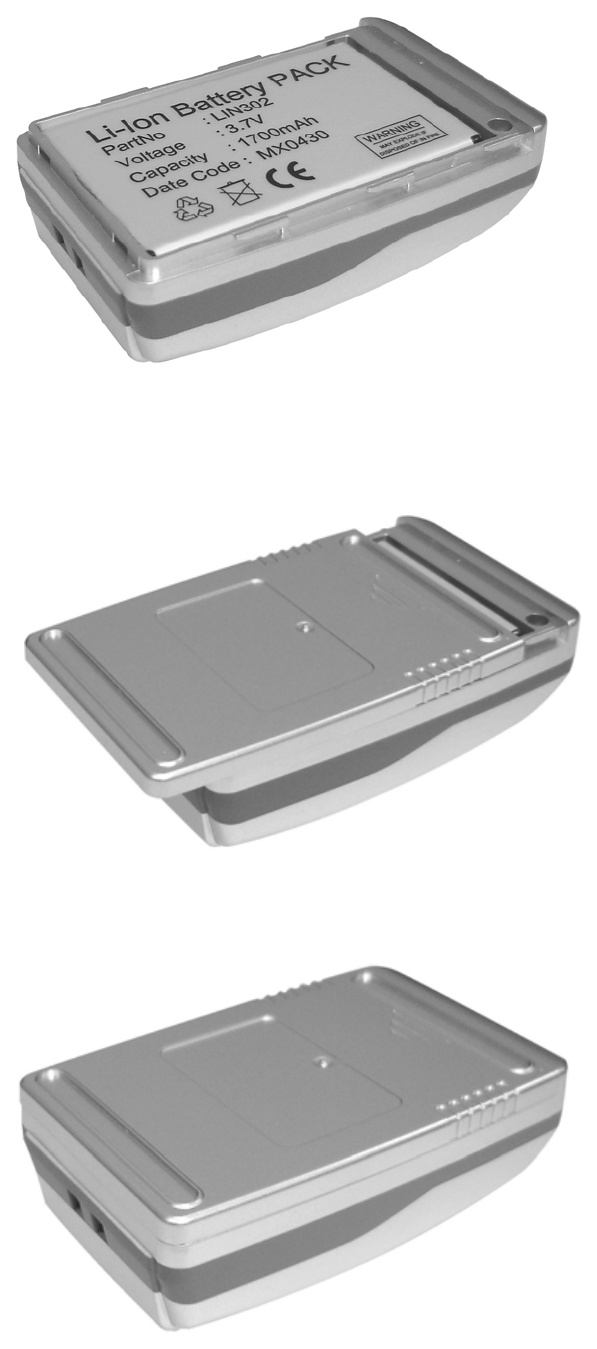
4
Figure 4 Fit battery into BT-338
Figure 5 Slide the cover of battery to close
Figure 6 Slide the cover of battery to close
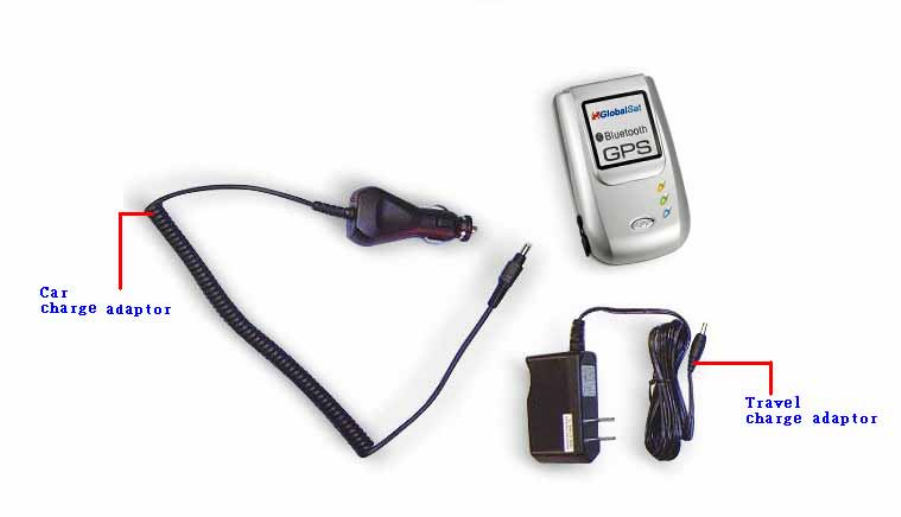
5
1.3 Accessories
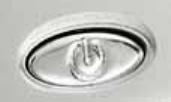
6
2. Introduction
The BT-338 is a GPS receiver with Bluetooth interface and built-in active antenna for
high sensitivity to tracking signal. Based on the SiRF star III Low power chip set and
supports all functions (Single Sat updates in reduced visibility, Superior urban canyon
performance, FoliageLock for weak signal tracking, etc.). The BT-338 is well suited to
system integrations including PDA, Smart phone, Tablet PC and Notebook PC with
Bluetooth devices. It satisfies a wide variety of applications that are purposes in automotive,
and outdoor recreation navigation systems.
2.1 Package
Before you start up, make sure that your package includes following items. If any item
is missing or damaged, please contact your dealer immediately.
Bluetooth GPS Receiver
A CD with the User Manual and the Testing Program.
AC Power Charger
DC Car Power Charger
2.2 Power Switch
Power on:
Press the power button 1 second until the power LED is on.
Power off:
Press the power button 1 second until the power LED is off.
7
2.3 Power Jack
The power jack lets you to connect either a DC car power charger (included) or AC
power charger (included) to recharge the internal battery. Please note that the adapter
rating 5V, 1.2 A, positive pole center.
2.4 LED Function
Bluetooth Status LED (Blue):
Blinking (Slowly) ---- Not connected to any Bluetooth device.
Blinking (Quickly) ---- Connected to other Bluetooth device.
GPS Status LED (Green):
Blinking ---- GPS position is fixed
Steady light ---- GPS position is not fixed
Battery Status LED (Red/Yellow):
Red ---- Battery power is critically low. Charge immediately.
Yellow ---- Battery is charging now.
LED off ---- Battery is partially full or fully charged.
2.5 Power-saving Function
When you start the power of the Bluetooth GPS Receiver BT-338, if the Bluetooth is not
connected to any devices within 10 minutes, BT-338 will turn off the power automatically,
and all the LED will go off simultaneously.
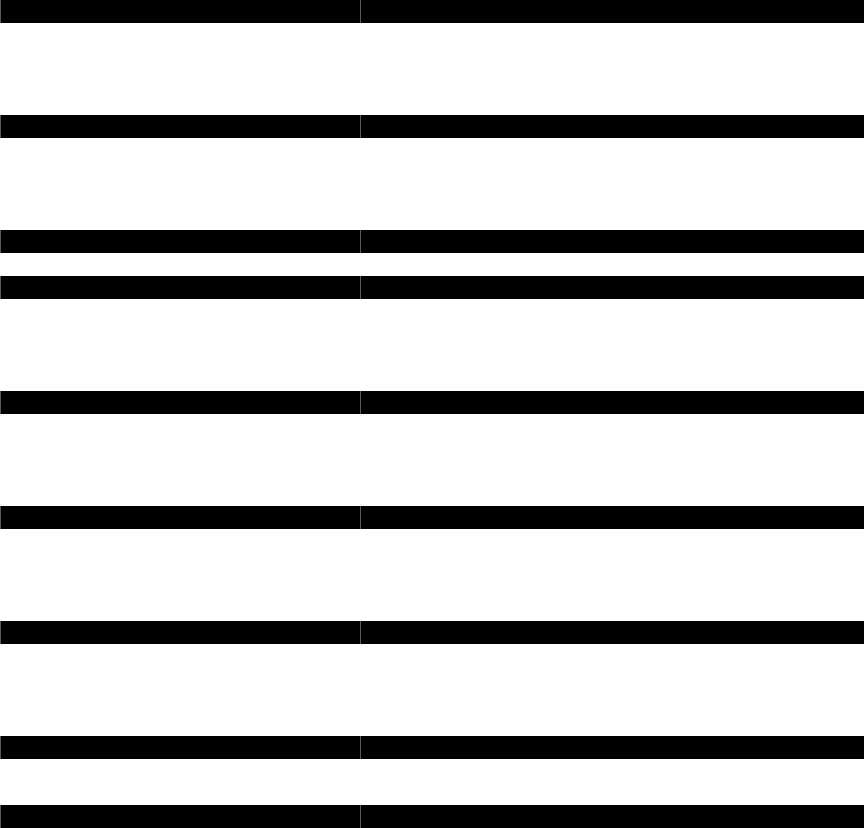
8
3. Specification
3.1 System Specification
Electrical Characteristics (Receiver)
Frequency L1, 1575.42 MHz
C/A Code 1.023 MHz chip rate
Channels 20 all-in-view tracking
Tracking Sensitivity -159 dBm
Accuracy
Position Horizontal 10m 2D RMS (SA off)
WAAS enabled 5m 2D RMS (SA off)
Time 1 micro-second synchronized to GPS time
Velocity 0.1m/sec 95% (SA off)
Datum
Datum WGS-84
Acquisition Rate
Hot start 8 sec., average (with ephemeris and almanac valid)
Warm start 38 sec., average (with almanac but not ephemeris)
Cold start 42 sec., average (neither almanac nor ephemeris)
Reacquisition 0.1 sec. average (interruption recovery time)
Protocol
GPS Output Data NMEA 0183 protocol, and supports command:
GGA(1sec), GSA(1 sec), GSV(5 sec), RMC(1sec)
( VTG and GLL are optional)
GPS transfer rate 38400,N,8,1
Dynamic Condition
Acceleration Limit Less than 4g
Altitude Limit 18,000 meters (60,000 feet) max.
Velocity Limit 515 meters/sec. (1,000 knots) max.
Jerk Limit 20 m/sec**3
Power
Voltage Built-in rechargeable battery(1650 mAh) and 5V DC
input charging circuit
Operation Time 15 hr. After fully recharged, in continuous mode
>20 hr in trickle power mode
Physical Characteristics
Dimension 72.5mm x 40.4mm x 26mm
Weight 75g
Temperature
Operating -20°~ 60°C
Storage -30°~ 80°C
Humidity Up to 95% non-condensing
3.2 Bluetooth Specification
● Bluetooth V1.2 Compliant
● Supply Voltage : 2.8V ~ 3.3V
● Frequency Range : 2.402 ~ 2.480 GHz
● Receiver Sensitivity : -80 dBm
● Transmit Power : Class 2
● Transmitting Range : 10 m (Depends on environment)
● Power Consumption : 45 mA (Typical)
9
4. Usage
4.1. For PDA with built-in Bluetooth
1. Turn on the power switch in BT-338
2. Please refer to the user manual of PDA to enable the Bluetooth of PDA
connecting to the BT-338. Some PDAs may need the Bluetooth passkey, the
passkey is “0000”.
3. Check the number of COM port used by Bluetooth.
4. Run the suitable mapping/navigation software and select the correct COM port
& baud rate : 38400
4.2. For PDA with Bluetooth Compact Flash card
1. Turn on the power switch in BT-338
2. Please refer to the user manual of Bluetooth Compact Flash card to enable it
connects to the BT-338. Some Bluetooth devices may need the Bluetooth
passkey, the passkey is “0000”.
3. Check the number of COM port used by Bluetooth.(Example COM 6).
4. Running the suitable mapping/navigation software and select the correct COM
port & baud rate : 38400.
4.3. For Notebook with Bluetooth device
1. Turn on the power switch in BT-338
2. Please refer to the user manual of Bluetooth device to enable it connects to the
BT-338. Some Bluetooth devices may need the Bluetooth passkey, the passkey is
10
“0000”.
3. Check the number of COM port used by Bluetooth.(Example COM 6).
4. Running the suitable mapping/navigation software and select the correct COM
port & baud rate : 38400.
Note: The Bluetooth device in most of the applications have an “auto-detect”
feature that you do not need to select the Baud Rate.
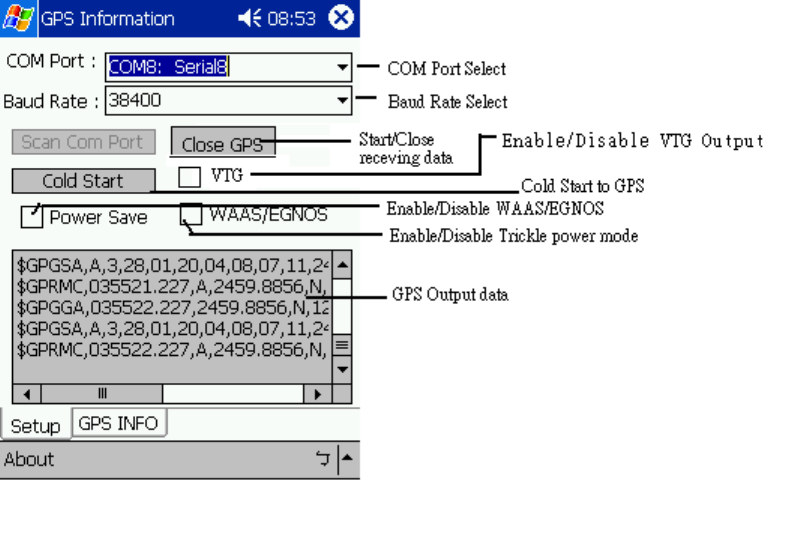
11
5. How to test your Bluetooth GPS Receiver?
The testing program only supports the Microsoft Windows CE & Pocket PC based PDA
platform.
1. Run the “GPSinfo.exe” to execute the installation procedure of testing program (via
PC and ActiveSync).
2. Run the “GPS Information” program from “Start → Program files” of PDA.
Here is the description of “GPS Information” testing program :
User must select COM port , Baud Rate (38400) and click the [Star GPS] button to start
receiving GPS data.
Note: The Bluetooth device in most of the applications have an “auto-detect”
feature that you do not need to select the Baud Rate.
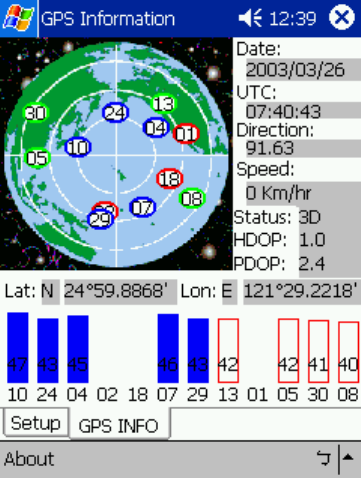
12
13
FCC Notices
This device complies with part 15 of the FCC rules. Operation is subject to the following two
conditions:
(1)This device may not cause harmful interference, and
(2)This device must accept any interference received, including interference that may
cause undesired operation .
FCC RF Exposure requirements:
This device and its antenna(s) must not be co-located or operation in conjunction with any
other antenna or transmitter.
NOTE: THE MANUFACTURER IS NOT RESPONSIBLE FOR ANY RADIO OR TV
INTERFERENCE CAUSED BY UNAUTHORIZED MODIFICATIONS TO THIS
EQUIPMENT. SUCH MODIFICATIONS COULD VOID THE USER'S AUTHORITY TO
OPERATE THE EQUIPMENT.